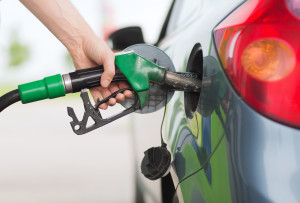While the automotive industry develops better technology freeing people with disabilities to drive, they find their journey cut short by a lack of accessibility at the gas pump.
The height of the controls and keyboard may put them out of reach to someone who uses a wheelchair. Those with dexterity issues cannot manipulate the nozzle and gas hose. Wheelchair lifts may not have sufficient space due to the narrow width of lanes between gas pumps.
The disappearance of full-serve gas stations has heightened the issue of accessibility. Most stations are either all self-service or offer a few full-service pumps at a higher cost. Without accessible pumps, drivers with a disability would either have to pay more at the full-serve pumps where available or not be able to buy gas at all at fully self-serve stations. (Two states, New Jersey and Oregon, ban self-serve pumps, and only have full-service stations.)
The Americans with Disabilities Act passed in 1990 only required that gas stations offer equal access by providing an assistant available to pump gas at the driver’s request, and only if the station has at least two attendants working. They could not charge disabled drivers the higher, full-service price. The ADA required stations to have signs asking drivers with disabilities to honk or otherwise signal for assistance. Some stations have a call button.
In 2012 legislators expanded the act to recognize that some drivers would like to pump their own fuel. The ADA now requires that all operable parts of a gas pump be at or below 54 inches above the driving surface. Any new construction must have those parts at no higher than 48 inches above the surface. The operable parts are fuel grade selection buttons, credit card readers and help buttons. Station owners who are not in compliance face hefty fines.
Advocates ask that there be a designated pump for handicap accessibility, a clear posting of what hours a station will have sufficient employees to provide assistance, an oversized key pad which is no more than 48 inches above the driving service and is easy to manipulate for those with dexterity issues, and a national database of when and where services are available.
Right now, complaints drive compliance at gas stations. Perhaps, when the industry realizes that drivers with disabilities are an economic force ready to patronize an accessible station, they will rework their pumps voluntarily or develop an application to map out accessible stations. Meanwhile, if you have had problems with gas station accessibility, contact us and we will advocate for you.

